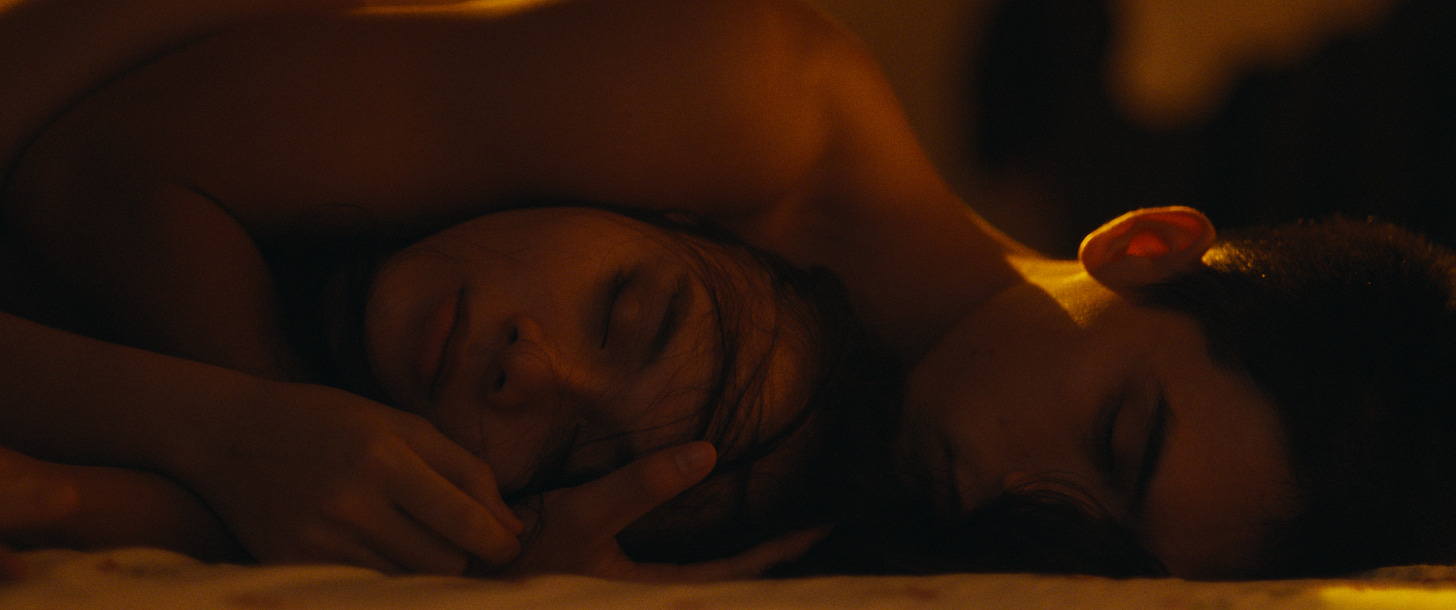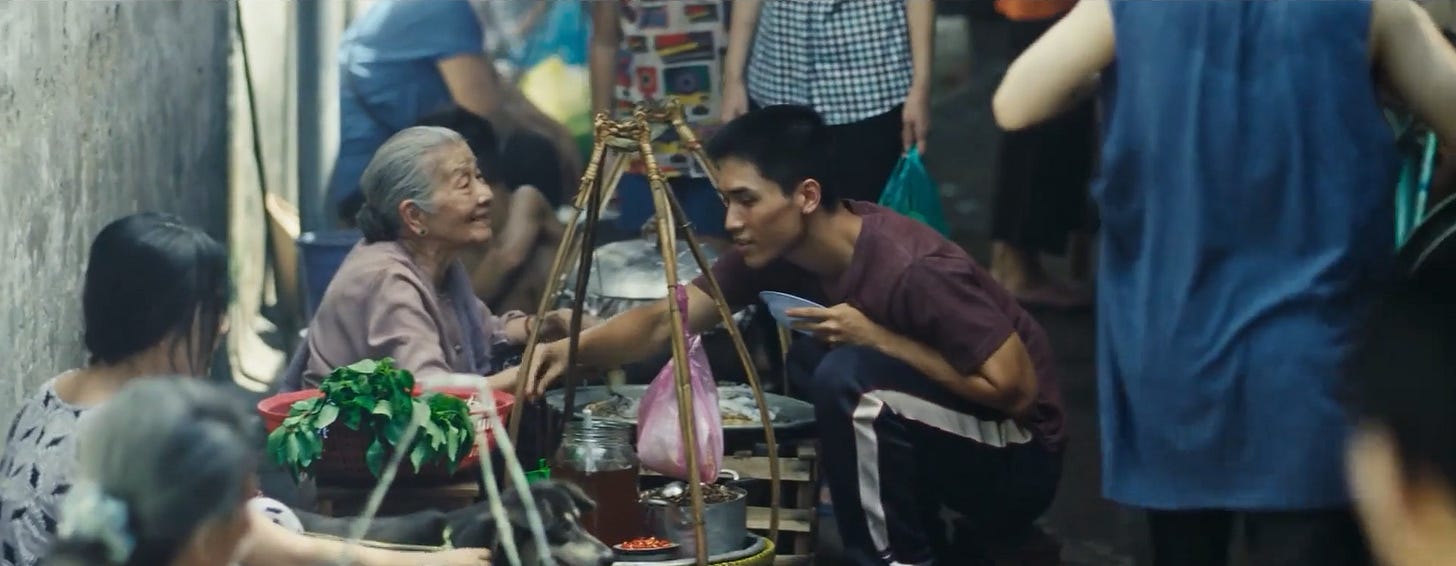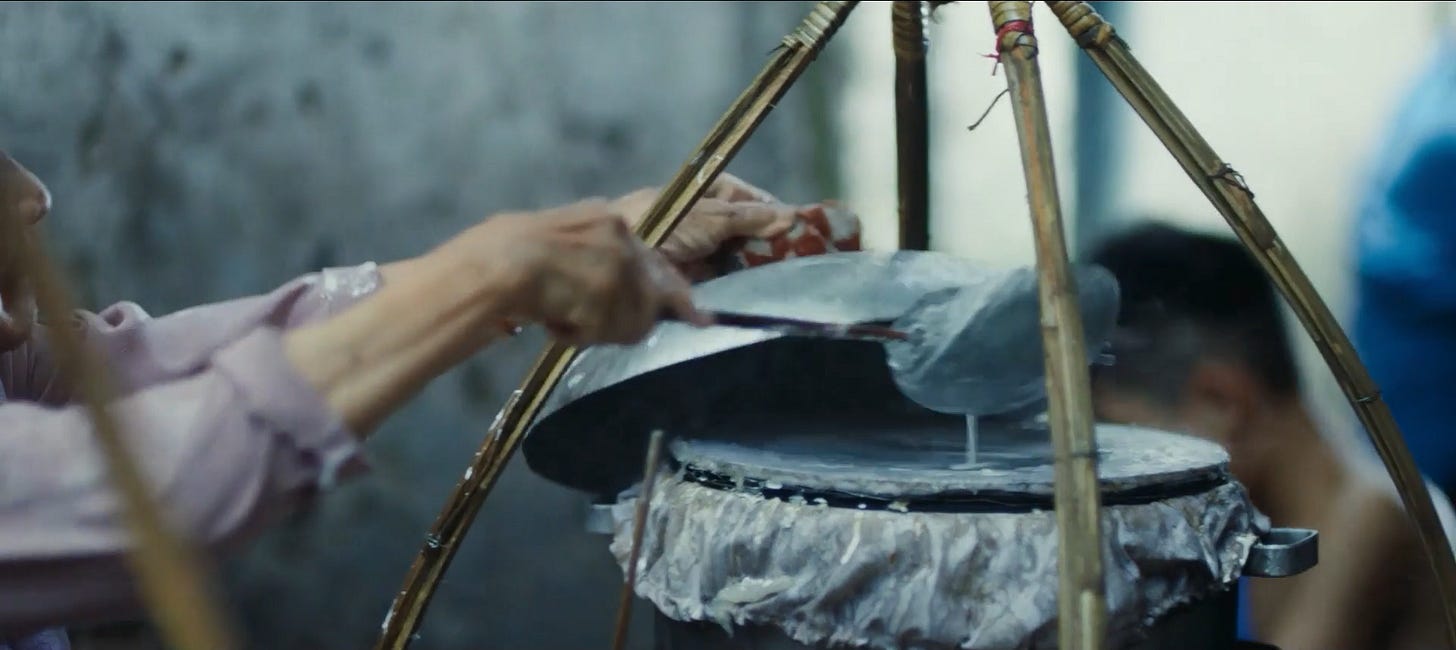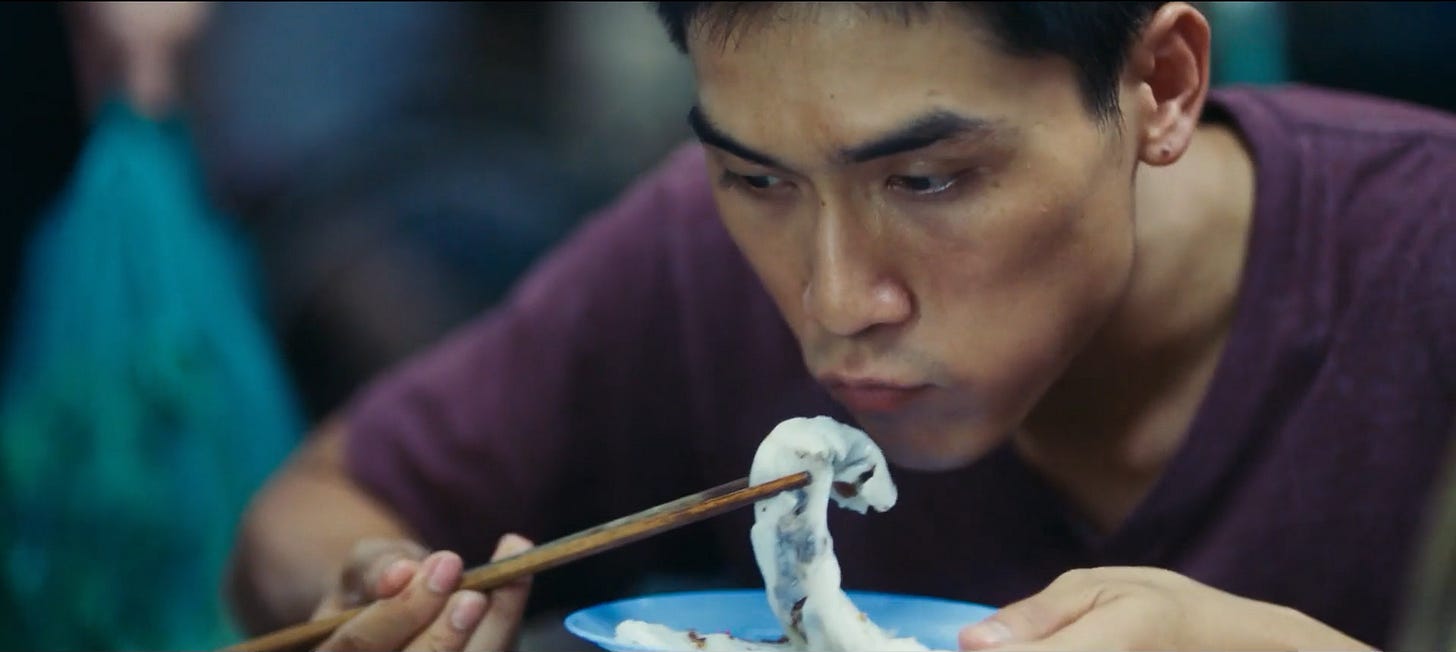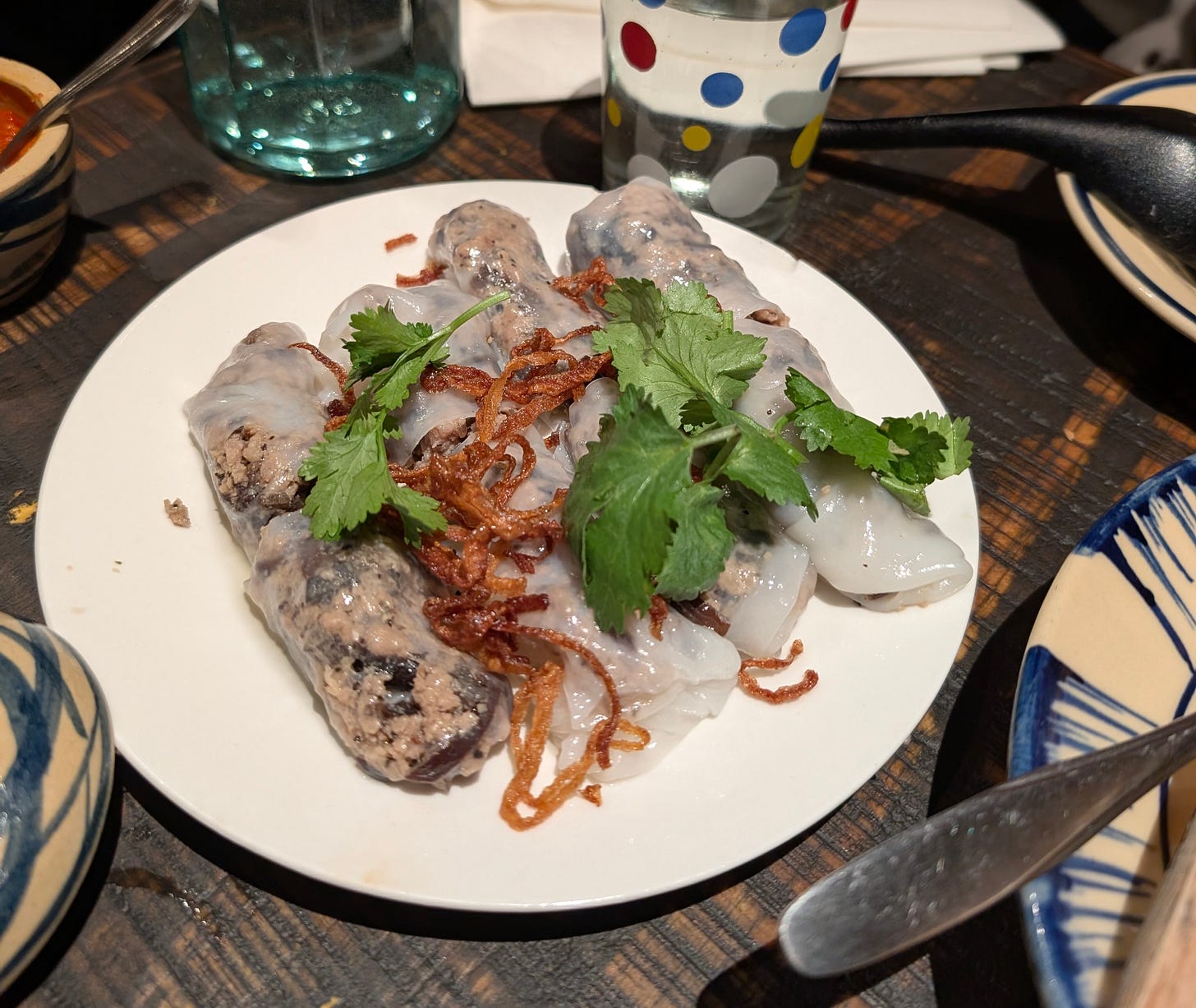Nights of Being Wild
Set in 1990s Saigon, “Skin of Youth” connects a tumultuous queer romance to Vietnam’s transition towards economic liberalization.
The New York Asian Film Festival, which is running until the end of this week, typically casts a spotlight on Asian cinema aimed at their domestic markets, as opposed to the super artsy stuff that will play at Cannes or NYFF. (And not to be confused with the Asian American International Film Festival, which begins at the end of the month.) One film in the lineup that may not be released in its country of origin is Skin of Youth, the second film from Vietnamese filmmaker Ash Mayfair. Her first movie was censored by government authorities, and there has been no word on whether this one will be approved. Coming off the heels of a theatrical release in Japan, Skin of Youth has its North American premiere this Thursday at the Walter Reade, with the director on hand for a Q&A.
Here’s my review of the film!
Skin of Youth
Screens on July 24 as part of the New York Asian Film Festival. Currently seeking distribution.
There has been a recent wave of Vietnamese arthouse cinema that prioritizes sensory immersion over traditional storytelling, much of it shaped by the works of Apichatpong Weerasethakul. One of the first—and best—films to have emerged from this movement was The Third Wife, the debut feature by NYU-trained filmmaker Ash Mayfair. Set at the tail end of the 19th century, the film riffs on Raise the Red Lantern but in an even more ethereal mode. It has an especially hypnotic quality: nine minutes elapse before anyone speaks, but thanks to the lush cinematography and entrancing pacing, I didn’t notice at all.
Seven years after that film premiered, Mayfair has returned with Skin of Youth. She reunites with many of the collaborators who helped make her debut so uniquely entrancing, including cinematographer Chananun Chotrungroj and editor Julie Béziau. Mayfair’s follow-up appears to seek a broader audience, trading the poetic abstraction of The Third Wife for a more conventionally structured drama. This shift doesn't necessarily mean a downgrade, and for the most part, the film is effective in situating its character dynamics within a broader political context. But it undermines itself when it falls back on outdated narrative tropes, particularly those regarding queer suffering.
Set in 1990s Saigon, Skin of Youth centers on the tumultuous relationship between San (Trân Quân), a transgender cabaret singer and sex worker, and Nam (Võ Diên Gia Huy), a prizefighter scraping together his earnings to help his partner afford gender-affirming surgery. They enter the film intertwined, both physically and emotionally, their tenderness and aggression held together by humid Saigon nights.
That balance is disrupted when San is propositioned by Mr. Vuong (Hajime Inoue), a wealthy businessman entranced by her nightclub performances. His indecent proposal: spend enough nights with him, and San will have the money she needs to transition. “I can buy this whole city,” he tells her in the backseat of his limousine. “Let alone a few body parts for you.” San agrees, and Nam accepts this, at least at first.
By entering this arrangement, San becomes linked to her nation, which also sought a transition during this time. Shifting away from central planning to a market-based economy, the government instituted a series of reforms known as Đổi Mới. Private enterprise was legalized, as was foreign investment. By the end of the nineties, Vietnam had successfully begun to integrate itself with the global economy without shedding its socialist roots. The country’s GDP per capita increased more than fourfold and the poverty rate dropped precipitously. But it was undoubtedly a destabilizing era, and the film reflects an ambivalent perspective regarding who benefitted the most from this economic transformation. It is no coincidence that Vuong, a man whose hands are in many places (not all of them legal), is Japanese.
As months pass (a fact that the film clumsily conveys), Nam grows resentful of San’s continued relationship with the moneyed interloper. He throws himself into increasingly brutal cage fights, both to chase bigger purses and to release his pent-up anger. He also impregnates a young sex worker. Out of pity, solidarity, or both, San unexpectedly invites the tender Mimi (Phan Thi Kim Ngân) into her home, and the two form a genuine bond. Even Nam’s grandmother, who had once half-jokingly suggested that his relationship with a trans woman did not obviate the opportunity for biological grandchildren, is remarkably supportive of the whole situation. But this makeshift family offers only a temporary reprieve from a hostile world.
There are many gestures to Wong Kar-Wai, which is further accentuated by the 1990s period setting. The passionate sex scenes are saturated in the same vibrant orange and green hues of Happy Together, which also inspires the push-pull dynamic between San and Nam. A traumatic incident employs the same impressionistic step-printing effect used in Chungking Express. Skin of Youth takes its Vietnamese title, Ồn ào tuổi trẻ, from a poem by Lưu Quang Vũ. It can be loosely translated to “the noisy and bitter days of our youth1.” That’s not too far from Days of Being Wild, the title of Wong’s own sophomore feature.
But it’s during San’s swooning nightclub performances that Mayfair most fully channels that same sense of aching yearning found in Wong’s filmography. The original songs, written by Tôn Thất An, evoke Asian pop music of the 1990s, with an acknowledged nod to the ballads of Leslie Cheung and Anita Mui. I only wish the lyrics had been subtitled in the version I saw.
Nothing is inherently wrong with such homages; cinema would be better off if more filmmakers were this reverential toward early Wong Kar-Wai and Zhang Yimou. The trouble arises when Skin of Youth also replicates the narrative logic of that era’s queer tragedies, and the clichéd ending threatens to undo the entire film. It’s fair to say that Mayfair is simply attuned to the social realities of that time, just as the film is grounded in a specific era of Vietnamese history and Asian cinema. But one can evoke the past without being stuck in it.
Still, Skin of Youth has its virtues. It’s one of the most accessible Vietnamese films to have hit the international festival circuit in recent years, and it shines a light into the shadow economies created by the country’s rapid development. But the film’s greatest asset is Trân Quân, who had never acted before and is the first trans person to lead a Vietnamese film. Her luminous presence suggests a better outcome than what her character got. We’ll see if her industry rises to the occasion.
Tasting Notes
Saigon is famous for its street food vendors, and Nam’s grandmother is one of them. She makes bánh cuốn, a mixture of pork, jicama, and mushrooms that are folded into a freshly steamed rice flour wrapper, served with a side of bean sprouts and herbs. It’s a classic Vietnamese appetizer that is a staple at all my family get-togethers, but hard to make at home due to the need for a special steaming pan.
I recently went to Bánh Anh Em, the sister restaurant of New York’s best Vietnamese restaurant. It’s just as good as the original Bánh, perhaps even better. Their bánh cuốn was excellent, as was everything else that I tried.
The restaurant doesn’t take reservations, so either line up thirty minutes before opening or account for the 45 minute wait time. After putting my name down on a recent Friday afternoon, I doubled back to the Union Square Farmer’s Market to buy some fruit while my friends were in transit, then met up with them at Cure Thrift, which is next door to Bánh Anh Em. It is allegedly a thrift store, but if it is, it’s a thrift store for billionaires.
This translation applies to the full line in the poem: “Cái tuổi trẻ ồn ào mà cay cực của ta,” which is excerpted from “Quán cà phê ngoại ô” by Lưu Quang Vũ. I asked my mom to translate “Ồn ào tuổi trẻ” on its own and she said that without the context, it didn’t make much sense.



